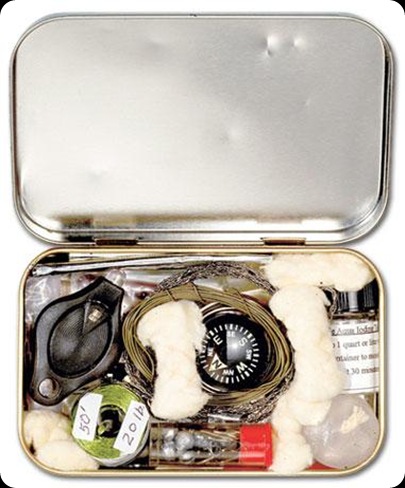Field and Stream magazine has posted a great article about creating a personal survival kit in an Altoids can. The article has been hugely popular with scout troops and individuals wanting to create their own lightweight kits.
Photo c / Field and Stream
Read the article here. Great Christmas presents? Probably. Great Saturday activity building them with your family? Absolutely.
